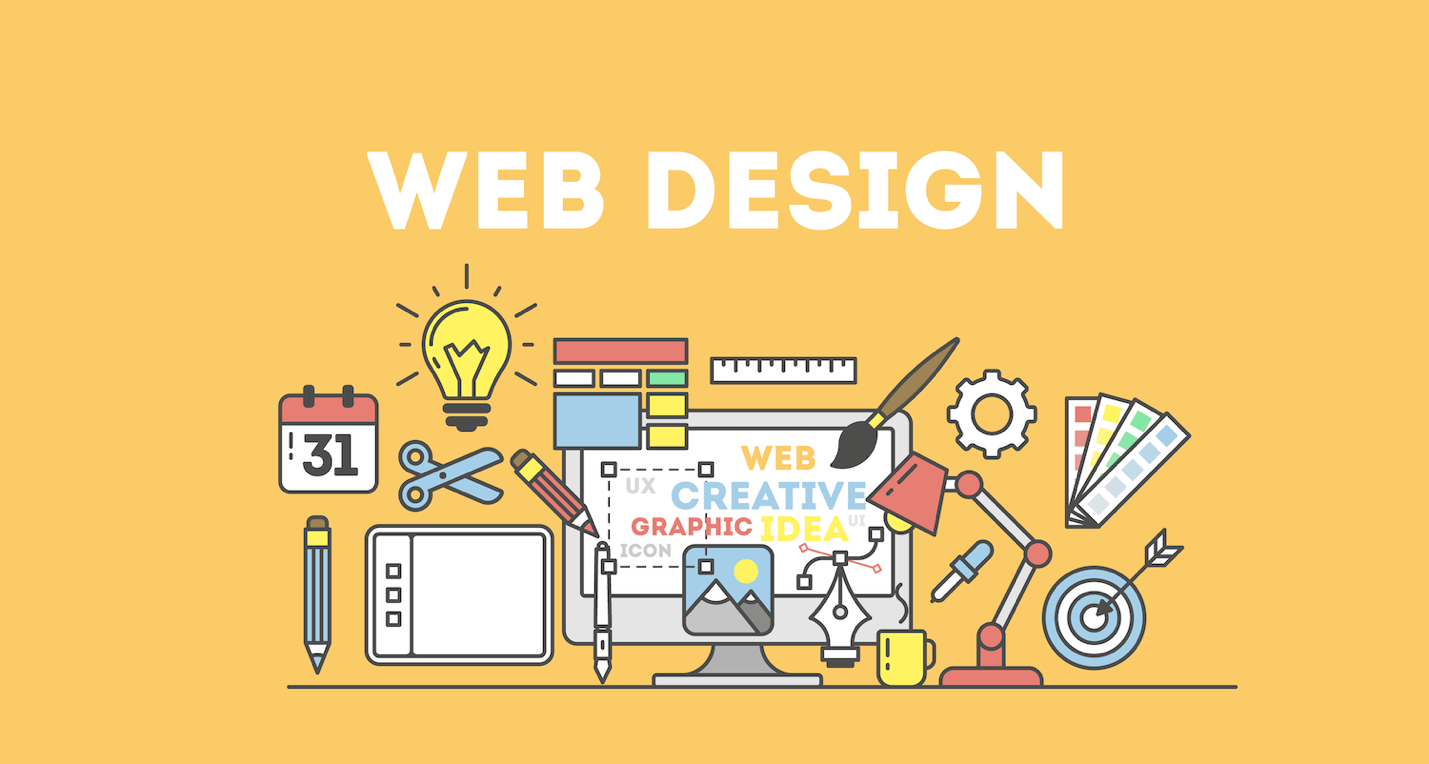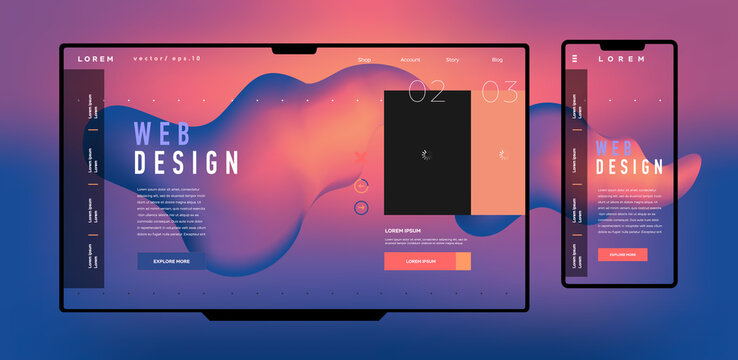The Power of User-Centered Web Site Design in Growing Your Online Target Market
Reliable style principles-- such as user-friendly navigation and ease of access-- are vital in cultivating customer satisfaction and loyalty. What approaches can companies embrace to ensure their designs resonate with users and inevitably drive development?

Understanding User-Centered Layout
User-Centered Layout (UCD) is a basic technique to web site advancement that prioritizes the needs, choices, and actions of end individuals throughout the layout procedure. This technique emphasizes recognizing users deeply-- via research study approaches such as meetings, surveys, and usability testing-- to develop an internet site that reverberates with them. By integrating individual feedback at every stage, designers can ensure that the end product lines up closely with customer assumptions.
UCD promotes repetitive layout, where models are evaluated and refined based upon individual communications and experiences. This cycle not just boosts functionality but additionally promotes a sense of ownership among customers, as they feel their input is valued and impactful. Furthermore, UCD helps recognize prospective obstacles and pain points in the user trip, allowing developers to deal with these challenges proactively.
Eventually, welcoming UCD brings about web sites that are a lot more user-friendly, engaging, and effective. By placing individuals at the facility of the style procedure, organizations can develop digital experiences that not only bring in but additionally keep their target market, driving higher fulfillment and commitment. In a competitive on-line landscape, this strategy is crucial for accomplishing continual success.
Key Principles of Customer Experience
A successful individual experience (UX) hinges on a number of key principles that lead the design process and boost communication between individuals and the site. Functionality is extremely important; the internet site has to be user-friendly, permitting individuals to browse quickly and locate information rapidly. This consists of clear labeling and a rational structure that decreases cognitive lots.
Secondly, ease of access plays a crucial role in making sure that all customers, despite their disabilities or abilities, can efficiently involve with the website. Incorporating alt message for photos, key-board navigating, and display visitor compatibility promotes inclusivity.
Uniformity is one more necessary concept. A cohesive style language, from color pattern to typography, helps users construct knowledge and trust fund with the web site (Website Design). It likewise strengthens brand identity
Furthermore, feedback devices are essential. Individuals ought to receive prompt and clear actions to their actions, whether through aesthetic hints or confirmation messages, which enhances their self-confidence in browsing the website.
Last but not least, mobile responsiveness can not be overlooked. With a raising variety of customers accessing websites using mobile tools, a design that adjusts flawlessly to different screen sizes is essential for preserving a positive customer experience.
Advantages for Online Involvement
Effective online engagement offers countless advantages that can considerably enhance a website's total efficiency - Website Design. By promoting meaningful communications between users and the web site, organizations can grow a devoted target market that returns with regularity. Involved individuals are most likely to share material, thereby increasing natural reach and drawing in new site visitors through word-of-mouth promo
Enhanced online involvement likewise brings about boosted individual fulfillment. When customers locate an internet click here to read site that resonates with their requirements, they are much more likely to explore its offerings extensively, which can result in greater conversion rates. Additionally, interesting content motivates users to invest even more time on the site, lowering bounce prices and positively affecting search engine ranking formulas.
Moreover, efficient involvement provides indispensable understandings into individual choices and behaviors (Website Design). By examining customer interactions, organizations can tailor their web content and design techniques to satisfy the advancing expectations of their audience. This adaptive approach not only improves involvement yet also strengthens the brand name's online reputation as user-centric and receptive
Inevitably, prioritizing online interaction via user-centered style develops a successful community where both the organization and the audience benefit, causing continual development and success in the electronic landscape.

Strategies for Reliable Design
To optimize the advantages of online engagement, employing certain strategies in internet site design is critical. Initially, intuitive navigation is vital; customers need to easily find info without confusion. A well-structured menu, clear tags, and a sensible power structure boost the customer experience and lower bounce prices.
2nd, receptive layout is important in today's multi-device atmosphere. Making sure that a web site adapts perfectly to different screen sizes fosters access, therefore suiting a wider target market. This adaptability not only boosts customer complete satisfaction but additionally favorably affects internet search engine rankings.
Third, using aesthetic click over here now hierarchy guides customers' focus to essential components, such as phone calls to activity (CTAs) Using contrasting colors, differing font dimensions, and tactical spacing can effectively route individuals toward desired activities, assisting in greater communication.
Furthermore, implementing regular branding across all web pages builds trust and acknowledgment. A cohesive shade imagery, system, and typography strengthen brand identification and develop an expert look.
Lastly, maximizing loading speeds is crucial. Users are much less likely to involve with a slow-loading site, making performance optimization a crucial facet of effective style. By including these methods, internet site developers read this post here can improve customer experience and ultimately grow their on-line audience.
Real-World Success Stories
Success stories in user-centered internet site design show the substantial benefits of prioritizing customer experience. One noteworthy instance is the redesign of the internet site for the nonprofit company, Charity: Water. By incorporating individual comments, the company structured navigation and emphasized storytelling with impactful visuals. As an outcome, they experienced a 250% rise in online donations, demonstrating exactly how an intuitive design can drive individual interaction and assistance.
Another compelling case is that of Airbnb, which utilized user-centered design concepts to enhance their booking process. By simplifying the user journey and integrating customized suggestions, they dramatically reduced site desertion rates. This concentrate on user experience contributed to a profits growth of over 70% in a single year, underscoring the correlation between properly designed user interfaces and economic success.
In addition, the shopping titan, ASOS, executed individual screening to improve their mobile application. By attending to user pain factors, they accomplished an exceptional 30% boost in mobile sales. These examples highlight that buying user-centered layout not just enhances customer complete satisfaction but additionally drives concrete organization outcomes, reinforcing the vital function of customer experience in attaining on the internet growth.
Verdict
To conclude, user-centered website layout serves as a crucial method for improving online target market involvement. By prioritizing customer needs and choices, businesses can produce available and instinctive digital experiences that promote commitment and drive conversions. The integration of individual responses throughout the layout process not just reduces bounce rates yet also encourages expedition. Inevitably, adopting efficient user-centered layout principles can substantially add to an organization's success in a competitive digital landscape.
User-Centered Design (UCD) is an essential technique to web site growth that focuses on the demands, choices, and actions of end customers throughout the layout procedure. By including customer responses at every phase, developers can make certain that the last item straightens very closely with customer expectations.
A successful individual experience (UX) hinges on several key principles that guide the layout process and enhance interaction in between individuals and the web site.Success stories in user-centered site design highlight the substantial advantages of focusing on individual experience. These examples highlight that spending in user-centered style not only enhances customer complete satisfaction but also drives substantial service results, reinforcing the crucial duty of individual experience in accomplishing on the internet growth.